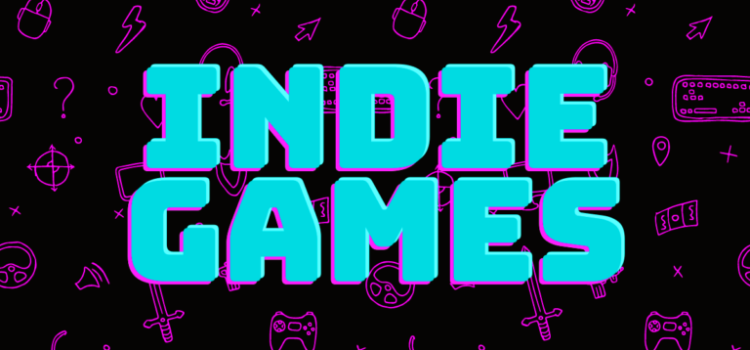
Introduction: Indie Games Are Changing the Game
In today’s fast-paced world of video games, flashy graphics and big budgets aren’t everything. In fact, some of the most creative, emotional, and innovative games in recent years have come from small teams or even solo developers. These are indie games—short for “independent games.”
The rise of indie games has created a major shift in the gaming industry. These titles often focus on deep storytelling, fresh gameplay ideas, and unique visuals that stand out in a crowd. With platforms like Steam, itch.io, and mobile app stores making distribution easier than ever, indie developers now have a direct path to reach millions of players across the world.
Let’s dive into how indie games started, what makes them so special, and why they are shaping the future of gaming.
What Are Indie Games?
Indie games are developed without the support of major game publishers. This gives developers more freedom to take risks, tell personal stories, and experiment with new mechanics.
They are usually:
- Created by small teams or individuals
- Funded through savings, crowdfunding, or small investments
- Focused on creativity over commercial trends
- Released on digital platforms like Steam, Nintendo eShop, Xbox Store, or PlayStation Store
Examples of successful indie games include:
- Stardew Valley (by ConcernedApe)
- Undertale (by Toby Fox)
- Celeste (by Matt Makes Games)
- Hades (by Supergiant Games)
These games prove that you don’t need a huge budget to make a hit. What you really need is a strong idea, passion, and a connection with your audience.
The Evolution and Growth of Indie Games
Early Days of Indie Gaming
In the early 2000s, indie games were mostly shared on forums or small websites. Developers created games for fun or as part of game jams (short competitions for making games quickly). Titles like Cave Story and Braid caught people’s attention and showed the power of small teams.
The Digital Age Boost
The launch of online stores like Steam and later mobile app platforms gave indie developers a big boost. These platforms made it possible to reach global audiences without needing a publisher. At the same time, development tools like Unity and Unreal Engine became more accessible, helping more people build their own games.
Crowdfunding Power
Websites like Kickstarter and Indiegogo allowed fans to fund game projects directly. Games like Shovel Knight and Hollow Knight were made possible because people believed in the creators and helped pay for development.
What Makes Indie Games Special?
1. Unique Storytelling
Indie games often explore topics that big games avoid. Mental health, identity, grief, and real-world struggles are just some of the themes tackled in indie titles.
- Night in the Woods dives into small-town life and mental health.
- Gris expresses emotional healing through visual art and sound.
- Undertale lets players shape the story through their choices, often challenging moral expectations.
These games connect with players on a deep level because they feel personal and honest.
2. Fresh Gameplay Ideas
Indie developers aren’t afraid to try something new. They build experiences that may seem strange at first but turn out to be unforgettable.
- Papers, Please makes you a border patrol agent, testing your ethics.
- Baba Is You lets you change the rules of the game mid-play.
- Slay the Spire mixed card games and roguelikes to create a new genre.
Without pressure from investors or publishers, indie creators can take bold steps.
3. Strong Community Connections
Many indie developers communicate directly with their players on platforms like Twitter, Discord, and Reddit. They take feedback seriously and often update their games based on what players want.
This connection builds strong fan communities and helps games stay relevant long after launch.
How Indie Games Influence the Industry
Big game studios are now watching indie trends closely. Games like Among Us (made by a small team) became a global hit and inspired many larger companies to take similar paths.
- Game design ideas from indie titles are now copied by AAA developers.
- Visual styles from low-budget games are becoming popular in mainstream titles.
- Publishing programs from big companies like Xbox and Nintendo now support indie games with special showcases and funding.
In short, indie games are helping the industry evolve, encouraging creativity and variety in a space that once focused only on big-name franchises.
Table: Key Differences Between Indie and AAA Games
| Feature | Indie Games | AAA Games |
|---|---|---|
| Team Size | Small (1–20 people) | Large (100+ people) |
| Budget | Low to medium | Multi-million-dollar budgets |
| Creative Freedom | Very high | Often limited by publishers |
| Innovation | High – more experimental | Medium – safer and proven concepts |
| Platform Support | Steam, consoles, mobile | Consoles, PC |
| Fan Engagement | Very personal and direct | Often managed by PR teams |
The Future of Indie Games
As technology keeps improving, the future for indie games looks brighter than ever.
1. New Tech = More Possibilities
- Virtual reality (VR) gives indie developers new ways to immerse players.
- Cloud gaming allows players to access indie games without downloads.
- AI tools may help small teams develop faster and smarter.
2. More Support from Big Platforms
Platforms like Xbox Game Pass, Nintendo Indie World, and Epic Games Store are offering funding and exposure to indie games. This support helps small developers reach bigger audiences.
3. Greater Diversity
Indie games are telling stories from around the world—created by people of different backgrounds, cultures, and experiences. This brings new voices into gaming and makes the industry more inclusive.
Tips for Discovering Great Indie Games
Want to try more indie games? Here’s how to find some hidden gems:
- Check out Steam’s Indie Highlights or itch.io’s popular picks
- Follow indie game reviewers on YouTube and Twitch
- Join gaming communities on Reddit, Discord, or Twitter
- Play free games made during game jams (like Ludum Dare)
You’ll be amazed at what small creators can do with passion and creativity.
Conclusion
The rise of indie games has brought a wave of creativity, diversity, and innovation to the gaming world. These games prove that great ideas don’t need big budgets—they need heart, vision, and the courage to be different. Indie developers are changing how we play, what stories we hear, and who gets to create. As tools and platforms improve, the future of gaming will be even more exciting—thanks in large part to the indie spirit. If you’re looking for games that are bold, emotional, and original, indie games are where it’s at.










